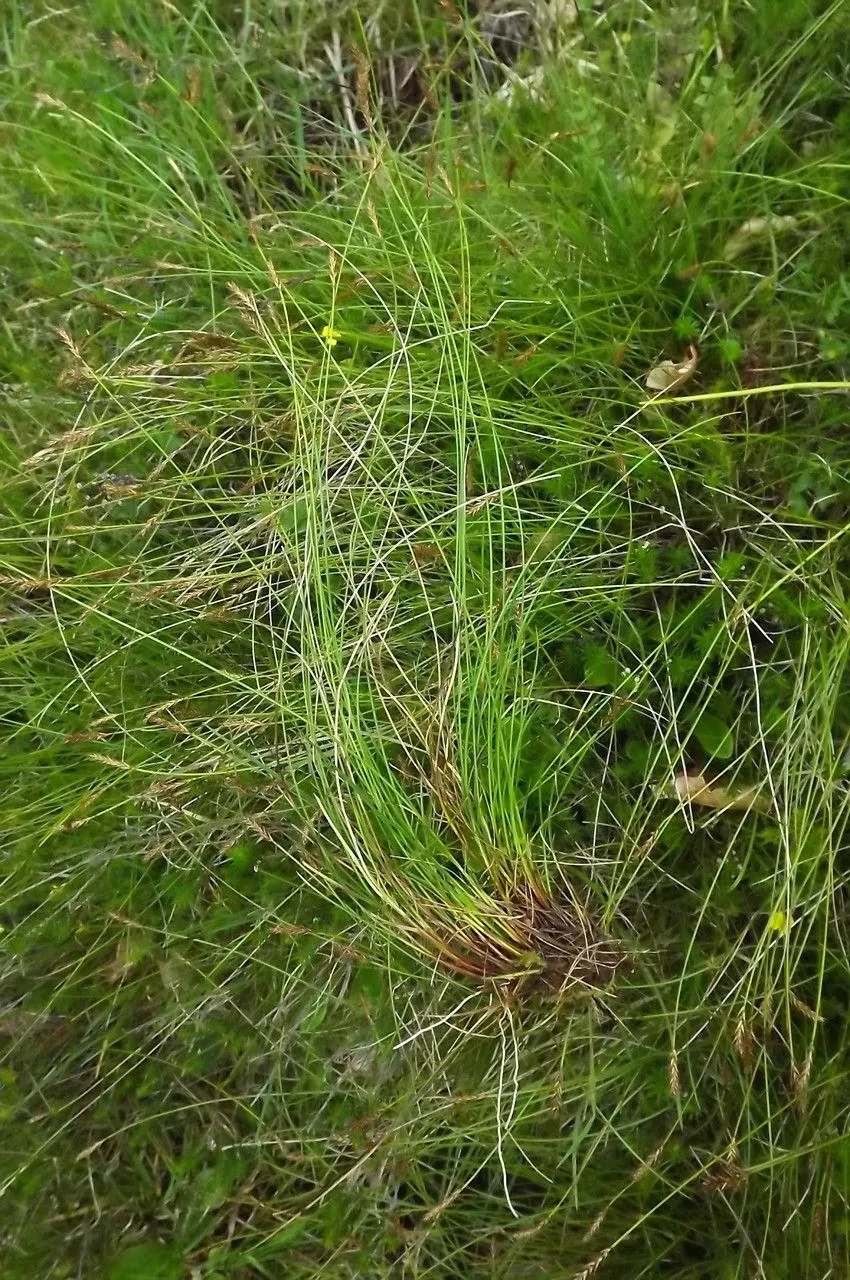
Author: Sm.
Bibliography: Trans. Linn. Soc. London 5: 266 (1800)
Year: 1800
Status: accepted
Rank: species
Genus: Carex
Vegetable: False
Observations: Europe to Türkiye
Davall’s sedge, scientifically known as Carex davalliana, is a notable member of the Cyperaceae family. First described by the botanist James Edward Smith, the taxonomy was recorded in the esteemed journal “Transactions of the Linnean Society of London” in 1800.
This perennial plant is native to a broad region extending from various parts of Europe to Türkiye. Davall’s sedge typically thrives in wet, marshy environments, making it a crucial component of wetland ecosystems. The species is recognized for its distinctive grass-like appearance, forming dense tufts that contribute to the structure and biodiversity of its native habitats.
Carex davalliana plays an essential ecological role, providing habitat and food for various wetland fauna. It is also valuable in soil conservation efforts due to its robust root system, which helps to stabilize the soil and prevent erosion in marshy and flood-prone areas. The plant’s ability to thrive in saturated soils makes it a critical species for maintaining the health and stability of wetland environments.
Botanically, it is characterized by its slender, green stems and narrow leaves, which can be identified by enthusiasts and experts alike. During its flowering phase, Davall’s sedge produces small, inconspicuous flowers, typical of the sedge family, which contribute to the plant’s reproductive cycle through wind pollination.
In summary, Davall’s sedge (Carex davalliana) is an important species for ecological balance in wetland areas from Europe to Türkiye. Its scientific identification and botanical significance were documented in 1800 by Smith, providing essential insights into its role within the Cyperaceae family and its environmental contributions.
Deu: davall-segge, davalls segge
Lav: devela grislis
Dan: rubladet star
Eng: davall’s sedge
Nld: veenzegge
Swe: strävstarr
Cym: hesg davall, hesgen davall
En: Davall’s Sedge
Be: Асака Дэвела
Ca: Càrex de Davall
Cs: Ostřice Davallova
Da: Rubladet star
Nl: Veenzegge
Et: Raudtarn
Fr: Laiche de Davall, Laîche de Davall, Carex de Davall
De: Davall-Segge, Rau-Segge, Torf-Segge, Davalls Segge
Hu: Lápi sás
It: Carice di Davall
Lv: Devela grīslis, Devela grislis
Lt: Liekninė viksva
Pl: Turzyca Davalla
Ru: Осока Дэвелла
Sv: Strävstarr
Uk: Осока Девелла
Cy: Hesgen Davall, Hesg Davall
Taken Jun 30, 2016 by Tela Botanica − Florent BECK (cc-by-sa)
Taken Jun 30, 2016 by Tela Botanica − Florent BECK (cc-by-sa)
Taken Apr 15, 2022 by Tomaž Jančar (cc-by-sa)
Taken Jul 6, 2015 by Tela Botanica − Yoan MARTIN (cc-by-sa)
Taken Jul 6, 2015 by Tela Botanica − Yoan MARTIN (cc-by-sa)
Taken Sep 12, 2020 by Marylin G (cc-by-sa)
Taken Jun 30, 2016 by Tela Botanica − Florent BECK (cc-by-sa)
Taken Jun 30, 2016 by Tela Botanica − Florent BECK (cc-by-sa)
Taken Jul 6, 2018 by Tela Botanica − Jean-Claude Bouzat (cc-by-sa)
Taken Jun 18, 2008 by Tela Botanica − Mathieu MENAND (cc-by-sa)
Taken Jan 1, 1800 by Tela Botanica − Thierry Pernot (cc-by-sa)
Taken Jan 1, 1800 by Tela Botanica − Thierry Pernot (cc-by-sa)
Taken Jan 1, 1800 by Tela Botanica − Thierry Pernot (cc-by-sa)
Taken Aug 15, 1996 by Photoflora – Benoit BOCK (©)
Taken Aug 15, 2012 by Photoflora – Jean-Luc TASSET (©)
Taken Jan 1, 1970 by Photoflora – L’Abbé COSTE (©)
Taken Jul 15, 2012 by Photoflora – Benoit BOCK (©)
Taken Jul 6, 2018 by Tela Botanica − Jean-Claude Bouzat (cc-by-sa)
Taken Jun 30, 2016 by Tela Botanica − Florent BECK (cc-by-sa)
Taken Jun 30, 2016 by Tela Botanica − Florent BECK (cc-by-sa)
Taken Jan 1, 1800 by Tela Botanica − Thierry Pernot (cc-by-sa)
Taken Jun 30, 2016 by Tela Botanica − Florent BECK (cc-by-sa)
Taken Jun 30, 2016 by Tela Botanica − Florent BECK (cc-by-sa)
Taken Jul 6, 2018 by Tela Botanica − Jean-Claude Bouzat (cc-by-sa)
Taken Jul 6, 2018 by Tela Botanica − Jean-Claude Bouzat (cc-by-sa)
Taken Jul 6, 2018 by Tela Botanica − Jean-Claude Bouzat (cc-by-sa)
Taken Jul 6, 2015 by Tela Botanica − Yoan MARTIN (cc-by-sa)
© copyright of the Board of Trustees of the Royal Botanic Gardens, Kew.
Ph maximum: 8.0
Ph minimum: 7.5
Light: 8
Atmospheric humidity: 8
Bloom months: [‘may’, ‘jun’, ‘jul’, ‘aug’]
Soil nutriments: 2
Family: Myrtaceae Author: (F.Muell.) K.D.Hill & L.A.S.Johnson Bibliography: Telopea 6: 402 (1995) Year: 1995 Status:…
Family: Rubiaceae Author: Pierre ex A.Froehner Bibliography: Notizbl. Bot. Gart. Berlin-Dahlem 1: 237 (1897) Year:…
Family: Sapindaceae Author: Koidz. Bibliography: J. Coll. Sci. Imp. Univ. Tokyo 32(1): 38 (1911) Year:…
Family: Asteraceae Author: A.Gray Bibliography: Pacif. Railr. Rep.: 107 (1857) Year: 1857 Status: accepted Rank:…
Family: Fabaceae Author: Medik. Bibliography: Vorles. Churpfälz. Phys.-Ökon. Ges. 2: 398 (1787) Year: 1787 Status:…
Family: Aspleniaceae Author: (Cav.) Alston Bibliography: Bull. Misc. Inform. Kew 1932: 309 (1932) Year: 1932…